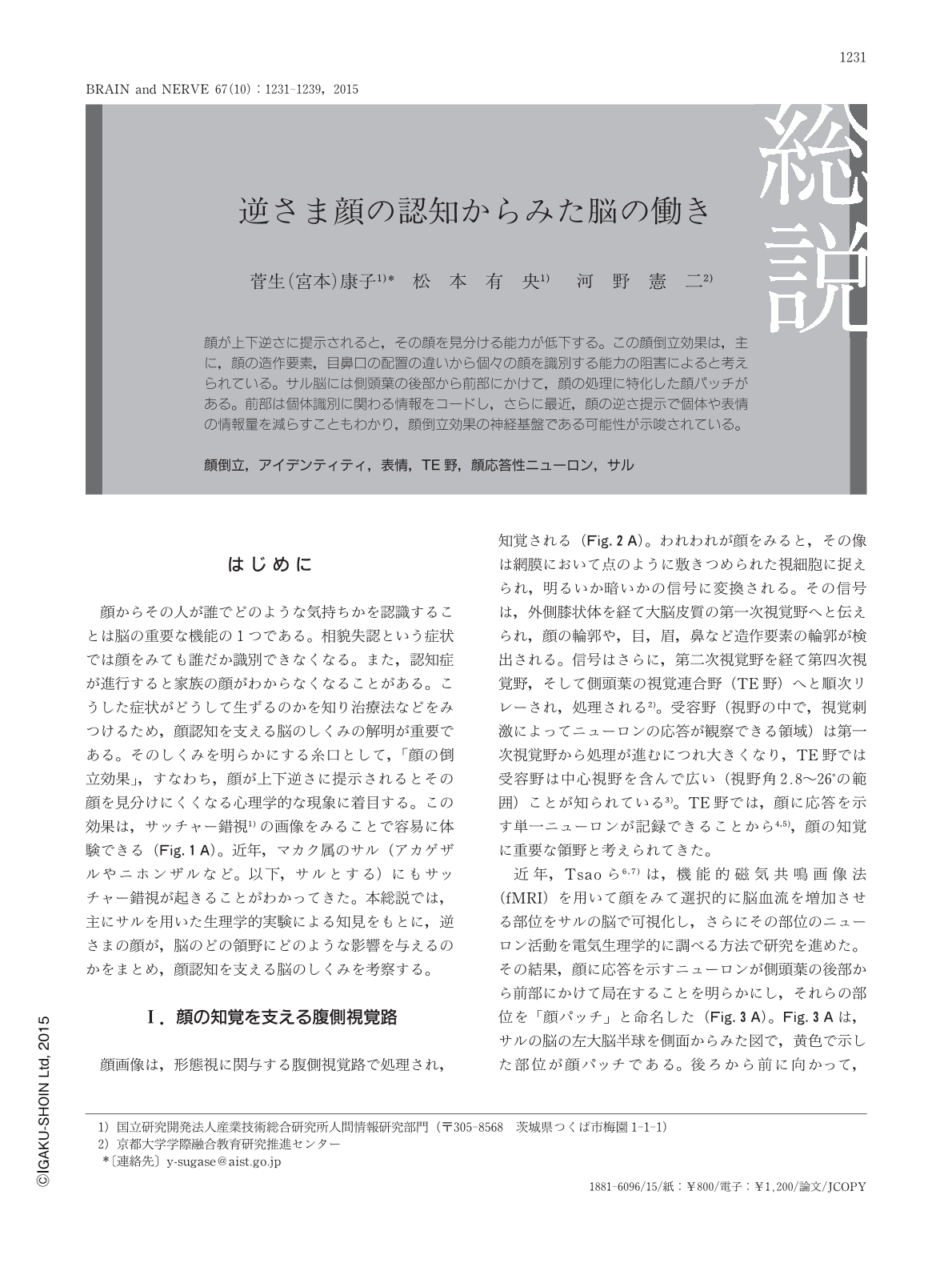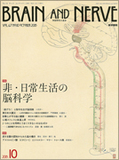Japanese
English
- 有料閲覧
- Abstract 文献概要
- 1ページ目 Look Inside
- 参考文献 Reference
顔が上下逆さに提示されると,その顔を見分ける能力が低下する。この顔倒立効果は,主に,顔の造作要素,目鼻口の配置の違いから個々の顔を識別する能力の阻害によると考えられている。サル脳には側頭葉の後部から前部にかけて,顔の処理に特化した顔パッチがある。前部は個体識別に関わる情報をコードし,さらに最近,顔の逆さ提示で個体や表情の情報量を減らすこともわかり,顔倒立効果の神経基盤である可能性が示唆されている。
Abstract
The ability to recognize faces is reduced with a picture-plane inversion of the faces, known as the face inversion effect. It has been reported that the configuration of facial features, for example, the distance between the eyes and mouth, becomes less perceptible when the face is inverted. In macaque monkeys, designated cortical areas, i.e., face patches, where face images are processed, have been found in the temporal visual cortex along the ventral visual pathway. Neurons in the anterior face patch (anterior part of the inferior temporal cortex) are known to encode view-invariant identity information. Thus, the anterior face patch is believed to be the final processing stage in the face patch system. A recent study showed that the face-inversion decreases the amount of the information about facial identity and facial expression conveyed by neurons, though it did not affect the information about the global category of the stimulus images (monkey versus human versus shape). The anterior face patch may, therefore, serve as the neural basis underlying the face inversion effect.

Copyright © 2015, Igaku-Shoin Ltd. All rights reserved.


